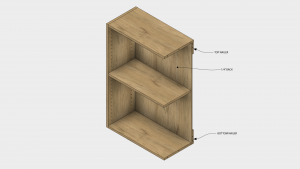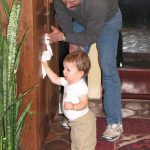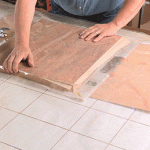We may receive a commission when you use our affiliate links. However, this does not impact our recommendations.
There’s more than one way to make backs for frameless cabinets. Here’s how to choose the method that’s right for your project.
Think about how many materials you want to use for the cabinet boxes. This means all the parts except doors, drawers and drawer fronts. If you plan to use 1/4” or 1/2” material for your cabinet backs, you’ll need at least two thicknesses of plywood (one for most of your cabinet parts and another for the backs). There’s nothing wrong with using 1/4” and 3/4” plywood together; it just means that you’ll have to remember to order both.
A 1/4” thick back doesn’t provide enough material for anchoring cabinets to the wall, so you’ll need to use nailers. A nailer is a 3/4” thick piece of material usually placed behind the cabinet back. When you install your cabinets, you’ll drive drywall screws through the 1/4” back and nailers into the wall studs.
To avoid the need for nailers and two different material thicknesses, you could build your cabinets with 3/4” thick backs. There are at least a few ways to do this, and the easiest is probably just to screw the backs in place. Wherever you have a finished end, you can rabbet it into the end panel (as shown at the top of this page), or use what’s called an applied panel. This is essentially an extra end panel that’s fastened to the outside of a cabinet. You might use an applied panel on a melamine cabinet where you want your interior parts to match but need veneer on the outside.
Most cabinet shops apply edge banding (PVC tape or wood veneer) to the bottom edges of end panels and 3/4” thick backs. Unless you’re kneeling down to get inside a base cabinet, you probably won’t be able to see the bottom of your uppers. But edge banding protects your cabinets’ veneer or particleboard core from moisture, so it’s a good idea to use it.
Want to build your own cabinets. Learn how in Popular Woodworking University’s Building Frameless Cabinets course. You’ll get 3D animations, cutlists and SketchUp models to help you understand the ins and outs of frameless cabinets.
Here are some supplies and tools we find essential in our everyday work around the shop. We may receive a commission from sales referred by our links; however, we have carefully selected these products for their usefulness and quality.










